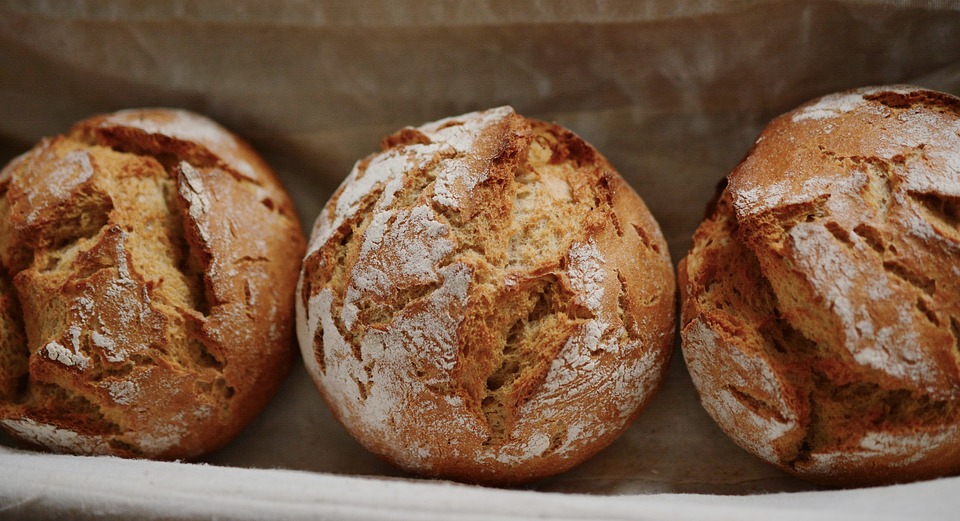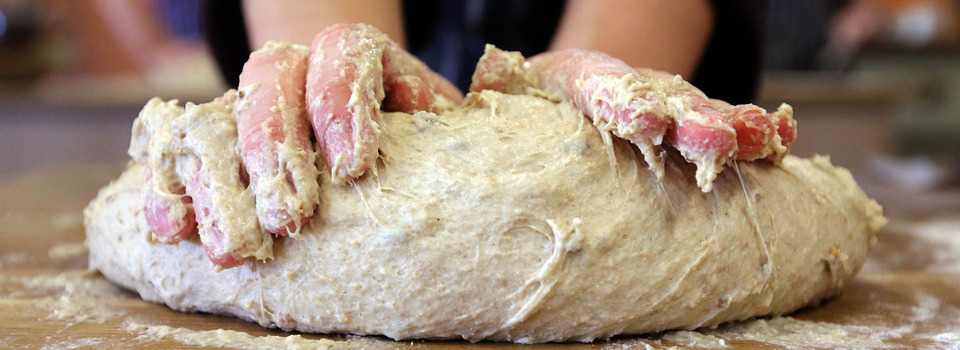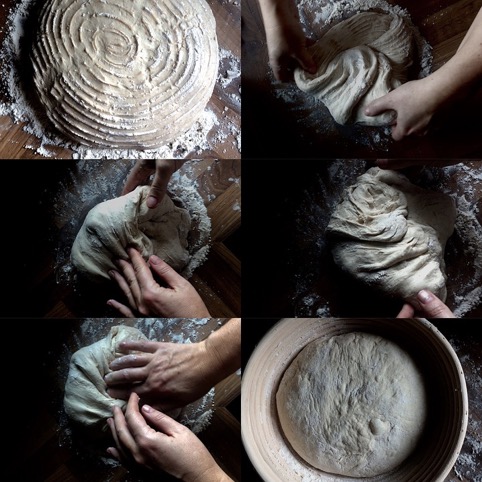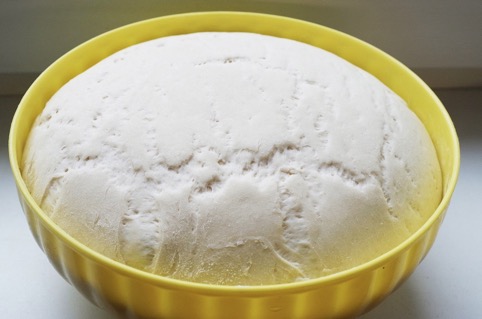
The history of bread is closely linked to the development of human civilizations, from the dawn of agriculture until nowadays. We do not know exactly when bread was born; its first documented production dates back to 2,000 B.C. when the Egyptians realized the importance of cooking food at high temperatures and discovered the sourdough; a dough made with flour and water and forgotten in a warm and humid place started to ferment naturally turning into a soft and spongy substance.

The Egyptian housewife, instead of throwing it away, baked it. Instead of the usual unleavened bread she got a lighter and more fragrant one so she decided to repeat the experiment and found out that by mixing a piece of the fermented dough with another one that had just been kneaded she could make this raise: she had discovered natural leavening!
From ancient times up to nowadays natural leavening has been widely used by man to produce more and more elaborated types of bread and baked products.
Sourdough produces a series of characteristics and has peculiar nutritional properties which have for centuries until nowadays caused the interest of scientists, from Plinius the Old to Louis Pasteur.
Bread is even today closely linked to civil and religious traditions and therefore has always played such an important role as to be considered as a synonym of food, life and well-being; in fact we should bear in mind Christian symbolism, the etymology of terms such as the Italian word “compagno” (cum panis: literally “someone to share bread with”) and also the hundreds of colloquial expressions in which the word bread is recurrent. Every people have adjusted their bread to the available raw materials: mainly durum wheat semolina in the South of Italy, possibly with the addition of local ingredients like olives or tomatoes, “pane sciocco” in Tuscany (they say that Florentine people started to avoid putting salt into the bread in order not to pay for the salt to Pisa), rye flour in Northern Europe… bread is therefore a product with a strong local identity; in Italy there exists more than 250 traditional types with over one thousand variants, some of which have also obtained an official acknowledgment and legal protection from European Union: the bread of Altamura, the “Pagnotta” (loaf) of Dittaino (EN), Italy and the Tuscan bread have a DOP label while the bread of Materak the “Coppia” (couple) of Ferrara and the homemade bread of Genzano are IGP.
The Italian consumer prefers handmade products, one-mile food, with a reduced salt content and a high nutritional value, so reappraising their typical characteristics and traditions. In this context they have rediscovered natural yeast, which is characterized by a complex ecosystem in which the dominant populations are yeasts and lactose bacteria whose biodiversity is closely linked to the local environment but also to the traditional practices adopted which are actually nothing else than technologies.

From the synergic activities of the varied microbic “society” a series of metabolic products are originated (ethanol, carbon dioxide, lactic acid, acetic acid, volatile composts, prebiotics) which give the product the characteristics making it different from manufactured bread obtained with brewer’s yeast only.

Thanks to the metabolic activity of the existing populations, the naturally leavened bread presents a more sensorial complexity which enhances its flavour; it also has better nutritional characteristics, for instance its glycaemic index: e.g. the bioavailability of the simple sugars it offers it is about half that of manufactured bread since acidity partially inhibits starch degradation into simple sugars; besides, its microorganisms permit, because of their enzymatic content, a better assimilation of nutritional factors; also the microbic activity enriches the product with prebiotic substances (exopolysaccharides) and makes it more digestible thanks to the partial pre-digestion of gluten, i.e. the protein of bread.
Also because of its higher acidity sourdough bread lasts longer than manufactured bread: staling process (loss of compactness and unpleasant taste growth) is slower and the growth of moulds and bacteria responsible of the most important degradation phenomena is inhibited.
Although the use of sourdough determines great advantages as regards the characteristics of the final product, it must be also taken into consideration the existence of disadvantages, mainly linked to the use of sourdough in the bakery process, such as the preparation time which is longer than what the use of brewer’s yeast requires, but in particular the necessity of frequent refreshments, the continual additions of water and flour which are needed in order to preserve and renew the sourdough between successive productions of bread. All these factors make the diffusion of sourdough only possible in small-scale contexts.
Bibliography
Gobbetti and M. Gänzle (eds.), Handbook on Sourdough Biotechnology, DOI 10.1007/978-1-4614-5425-0_2, Springer Science+Business Media New York 2013. Chapter 1 History and Social Aspects of Sourdough. Stefan Cappelle, Lacaze Guylaine, M. Gänzle, and M. Gobbetti.
Zambonelli C., Tini V., Giudici P., Grazia L. Microbiologia degli alimenti fermentati. Edagricole-New Business Media (2001).
Credits
Author: Chiara Sanmartin. Researcher in Food Technology at the University of Pisa. Holder of the course of “Composition and Analysis of Food Products” within the Master’s Degree Course in “Biosafety and Quality of Food” – Interdepartmental Agricultural Sciences and Veterinary Sciences of Pisa.
Translation by Maria Antonietta Sessa
